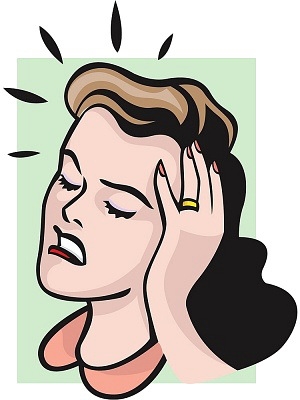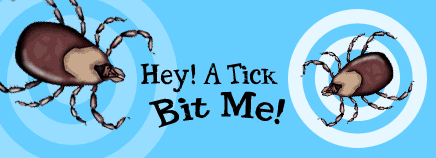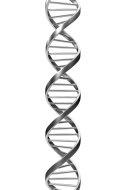Headaches Linked to Body’s Internal Clock
April 12th, 2023
Headaches and Your Internal Clock
The meta-analysis included 72 studies on how circadian rhythm—the body’s internal clock—appears to be involved in both cluster headaches and migraines, which together impact more than 40 million people in the United States.
Cluster headaches are a rare type of headache that cause bursts of intense pain around the eye. Each burst lasts about 15 minutes, but an attack can last between one and three hours. Cluster headaches commonly occur during the night.
Migraines usually come on during the day.
The studies included data on the time of day or time of year a person got a headache, and whether or not the headaches come on just before, during or just after sleep. Some of the studies also included research on whether certain genes associated with circadian rhythm are more common in people who get these types of headaches.
Cluster headaches were closely tied to circadian cycles, especially during season changes in the spring and fall, researchers found. More than 70 percent of people included in 16 studies on cluster headaches reported more attacks during these seasons and said they usually occurred between the late hours of the night and early hours of the morning.
The studies showed that five of the nine genes associated with cluster headaches were also involved in regulating circadian rhythms.
What surprised researchers was that half of migraine headaches across eight studies were associated with clear ebbs and flows throughout the day as well as the year. Most people had migraines during the morning, day or evening, and there was a stark drop off in the headaches from 1 pm to 7 am. They also reported more or worse migraines between April and October.
Many genes are associated with risk for migraines and the study found 110 of these genes were also tied to circadian rhythm.
The meta-analysis also found that people who get migraines often produce less melatonin than people who do not get headaches and produce even less during an attack. People with cluster headaches had both higher cortisol levels and lower melatonin levels.
The results were published in “Neurology” the American Academy of Neurology’s medical journal.
Cluster Headaches vs. Migraines
While there are similarities between both cluster headaches and migraines, there are certain distinctions:
- Time: A cluster headache is brief, but it comes on fast and strong. The pain may vanish within 15 minutes to two hours. Migraines tend to build up slowly and last a long time. It can stick around for up to 72 hours.
- How often: Cluster headaches tend to happen around the same time every day for weeks or months. During a cluster headache, you could have a headache every other day or up to eight in one day. Migraine pain may go up and down throughout the day. But it is rare to have more than one headache in a day.
- Location: A cluster headache is unilateral. That means it only affects one side of your head. You may feel like it is right behind your eye or on the side of your forehead. You can have a migraine that is behind your eye, by your temple, on both sides, or in the front or back of your head.
- How you feel: Cluster headaches often give you a sense of restlessness. You may feel better if you walk around. Your face or forehead may also start to sweat. Migraine headaches usually give you the urge to lie down and rest. In fact, the pain may get worse if you are active.
What IAA has to Say
Insurance Administrator of America wants you to be kept up to date in the world of health. Remember, with IAA one call does it all.
Tick Spread Parasitic Disease on the Rise
April 5th, 2023
Babesiosis on the Rise
Humans acquire babesiosis from deer ticks whose bites can transmit the parasite that infects red blood cells. Most transmissions occur from late May to early September.
Between 2011 and 2019, more than 16,000 cases of babesiosis were reported in the United States. The majority of cases were reported in the Northeast, according to the latest data from the Centers for Disease Control and Prevention (CDC).
The findings show that among the 10 states that reported babesiosis cases from 2011 to 2019, eight saw their numbers rise.
Signs and Symptoms
Babesiosis is spread by the same ticks that spread Lyme disease. It can cause:
- Chills
- Fatigue
- Fever
- Gastrointestinal symptoms
- Muscle and body aches
- Sweats
According to the CDC, the way to prevent babesiosis is to follow the same steps that guard against infection with other tick-borne diseases:
- Stay on cleared trails and minimize contact with leaf litter, brush and overgrown grasses, where ticks are likely to be found.
- Minimize the amount of exposed skin. Wear socks, long pants and a long-sleeved shirt. Tuck your pant legs into the socks. Wear light colored clothing to make it easier to see and remove ticks.
- Use repellent on skin and clothes.
- After being outside, check your body for ticks.
- Remove ticks from clothes and pets before going indoors.
- Remove ticks as soon as possible by using pointed tweezers.
Researchers think that as climate change drives longer periods of humidity, it creates more hospitable environments for ticks.
What IAA has to Say
When spending time outdoors in the coming months, Insurance Administrator of America hopes that you are prepared for ticks. IAA wants you to keep that bug spray handy during tick season.
Identifying Genetic Mutations Could Help Detect Bladder Cancer
March 22nd, 2023 Identifying genetic mutations in urine could help detect bladder cancer years before symptoms arise, a new study found.
Identifying genetic mutations in urine could help detect bladder cancer years before symptoms arise, a new study found.
New Test Focuses on Mutations
Early diagnosis and treatment of bladder cancer is crucial for survival from the disease, which is expected to include more than 82,000 new cases in the United States this year and about 16,700 deaths, according to the American Cancer Society.
The new test focuses on mutations in 10 genes. According to the study, the new test was used to evaluate urine samples from a 10-year study tracking the health of 50,000 participants in Iran. Urine samples from 29 people who developed bladder cancer during that time were tested along with 98 other participants as controls.
The test accurately predicted bladder cancer up to 12 years before clinical diagnosis in 66 percent of cases. It was more accurate when urine was tested closer to diagnosis, accurately predicting bladder cancer in 86 percent of participants whose urine was collected within seven years of diagnosis.
The test was 96 percent accurate among the control group, showing negative results for 94 of 98 of those who did not develop cancer.
Investigators also tested urine samples from 70 bladder cancer patients taken on the day of diagnosis. Genetic mutations were found in 71 percent of those cases.
A urine gene test could be used for routine screening of patients at elevated risk of developing bladder cancer.
The study was presented at the European Association of Urology annual congress.
Signs of Bladder Cancer
Bladder cancer is a common type of cancer that begins in the cells of the bladder. Bladder cancer can sometimes cause changes in urination, such as:
- Back pain
- Feeling as if you need to go right away, even when your bladder is not full
- Having to get up to urinate many times during the night
- Having to urinate more often than usual
- Having trouble urinating or having a weak urine stream
- Pain or burning during urination
In most cases, blood in the urine is the first sign of bladder cancer. Usually, the initial stages of bladder cancer (when it is small and only in the bladder) cause bleeding, but little or no pain or other symptoms.
What IAA has to Say
Insurance Administrator of America is here to bring you updates on the world of health. Just think of IAA as your third-party health monitor, here to keep you in the know!
New Research Shows Bempedoic Acid Helps Lower Cholesterol
March 15th, 2023 Bempedoic acid taken alone reduces cholesterol and heart attacks in patients who cannot tolerate statins, according to new clinical research.
Bempedoic acid taken alone reduces cholesterol and heart attacks in patients who cannot tolerate statins, according to new clinical research.
Bempedoic Acid and Cholesterol
Patients with high levels of LDL cholesterol, commonly known as “bad cholesterol,” usually take statin drugs to reduce their levels, but often experience painful side effects.
Among statin-intolerant patients, treatment with bempedoic acid was associated with a lower risk of major adverse cardiovascular events, the study found.
The research team enlisted a group of 13,970 patients who had negative reactions to statins and gave some of them bempedoic acid and some of them placebos over a period of six months.
Patients who received the bempedoic acid saw their LDL cholesterol drop by an average of 29.2 points by the end of the six-month trial.
After a 40-month follow-up period, patients who had received the bempedoic acid saw a 19 percent reduction in the risk of needing cardiac revascularization and saw a 23 percent reduction in the risk of heart attack.
The new research was published in the “New England Journal of Medicine.”
Lower Your Cholesterol
High cholesterol increases your risk of heart disease and heart attack. Lifestyle changes may help improve your cholesterol:
- Eat heart healthy foods: A few changes in your diet can reduce cholesterol and improve your heart health.
- Exercise most days of the week and increase your physical activity: Exercise can improve cholesterol. Moderate physical activity can help raise HDL cholesterol or “good” cholesterol.
- Quit smoking: Quitting smoking helps improve your HDL cholesterol.
- Lose weight: Carrying even a few extra pounds contributes to high cholesterol.
- Drink alcohol only in moderation: Too much alcohol can lead to serious health problems, including high blood pressure, heart failure and stroke.
Small changes add up!
What IAA has to Say
Insurance Administrator of America wants you to know what is going on in the world of health. Keep up to date with IAA.
FDA Approves at-home Duel COVID and Flu Test
March 8th, 2023 The Food and Drug Administration (FDA) has approved the first at-home test that can be used to determine whether a person has the flu or COVID-19.
The Food and Drug Administration (FDA) has approved the first at-home test that can be used to determine whether a person has the flu or COVID-19.
Duel COVID and Flu Test
Testing for the flu previously required a visit to a doctor’s office or urgent care. The test will be sold over the counter, and it can detect both Influenza A and Influenza B, as well as the SARS-CoV-2 virus (the virus that causes COVID-19).
The single-use test works by using a nasal swab that is placed in the test unit. Results are provided within 30 minutes.
The test correctly identified 99.3 percent of samples negative for Influenza A while correctly identifying 90.1 percent of samples positive for the virus. The test also properly identified 99.9 percent of samples negative for Influenza B in a small sample size.
The test correctly identified 100 percent of tests negative for COVID-19 and 88.3 percent of COVID-19 samples, according to the FDA.
Studies show that an at-home test can be less accurate than a lab test because users might not get enough of a sample for a valid result. Health care providers also may have more sensitive tests.
Signs and Symptoms of COVID-19 and the Flu
COVID-19 and the flu have many symptoms in common, including:
- Cough
- Fever
- Headache
- Muscle aches
- Nausea or vomiting
- Runny or stuffy nose
- Shortness of breath or difficulty breathing
- Tiredness
Symptoms of the two appear at different times, however. COVID-19 symptoms appear two to 14 days after exposure. Flu symptoms appear about one to four days after exposure.
What IAA has to Say
Insurance Administrator of America wants to keep you up to date on the world of health. Stay tuned to this blog to learn more. Remember, with IAA one call does it all.
